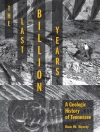Mechanics of Hydraulic Fracturing
Comprehensive single-volume reference work providing an overview of experimental results and predictive methods for hydraulic fracture growth in rocks
Mechanics of Hydraulic Fracturing: Experiment, Model, and Monitoring provides a summary of the research in mechanics of hydraulic fractures during the past two decades, plus new research trends to look for in the future. The book covers the contributions from theory, modeling, and experimentation, including the application of models to reservoir stimulation, mining preconditioning, and the formation of geological structures. The four expert editors emphasize the variety of diverse methods and tools in hydraulic fracturing and help the reader understand hydraulic fracture mechanics in complex geological situations.
To aid in reader comprehension, practical examples of new approaches and methods are presented throughout the book. Key topics covered in the book include:
* Prediction of fracture shapes, sizes, and distributions in sedimentary basins, plus their importance in petroleum industry
* Real-time monitoring methods, such as micro-seismicity and trace tracking
* How to uncover geometries of fractures like dikes and veins
* Fracture growth of individual foundations and its applications
Researchers and professionals working in the field of fluid-driven fracture growth will find immense value in this comprehensive reference on hydraulic fracturing mechanics.
Table of Content
Part I. Experimental and Monitoring Observations
1. Hydraulic Fracture Geometry from Mineback Mapping
2. Measurements of the Evolution of the Fluid Lag in Laboratory Hydraulic Fracture Experiments in Rocks
3. Mapping Hydraulic Fracture Growth Using Tiltmeter Monitoring Technique
4. Experimental Observations of Hydraulic Fracturing
5. A Field Trial and Experimental Studies on sc CO2 Fracturing
Part II. Theoretical and Numerical Methods
6. An Unstructured Moving Element Mesh for Hydraulic Fracture Modelling
7. Study of Hydraulic Fracture Interference with a Lattice Model
8. The Tipping Point: How Tip Asymptotics Can Enhance Numerical Modeling of Hydraulic Fracture Evolution
9. Plasticity: A Mechanism for Hydraulic Fracture Height Containment
10. Turbulent Flow Effects in Hydraulic Fracture Propagation in Permeable Rock
11. Analysis of a Constant Height Hydraulic Fracture
12. Discrete Element Modelling of Hydraulic Fracturing
Part III. Applications and Engineering Approaches
13. Interaction of a Hydraulic Fracture with Natural Fractures of Lesser Height and Weak Bedding Interfaces as a Possible Mechanism for Fracture Swarms
14. Hydraulic Fracturing Mechanisms Leading to Self-Organization within Dyke Swarms
15. Numerical Simulation of Thermal Fracturing During Heat Extraction from a Closed-Loop Circulation Enhanced Geothermal System
16. Multiple Hydraulic Fractures from a Highly Deviated Well: A XFEM Study
17. Hydraulic Fracturing-Induced Slip on a Permeable Fault
About the author
Xi Zhang, Professor, Faculty of Engineering, China University of Geosciences, Wuhan, China.
Bisheng Wu, Associate Professor, Department of Hydraulic Engineering, Tsinghua University, Beijing, China.
Diansen Yang, Professor, School of Civil Engineering, Wuhan University, Wuhan, China.
Andrew Bunger, Associate Professor of Civil and Environmental Engineering, University of Pittsburgh, PA, USA.












